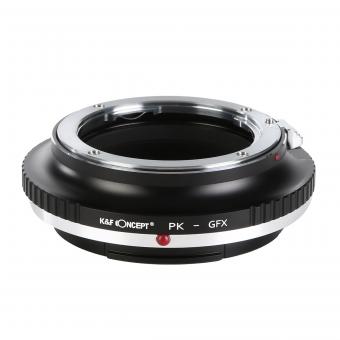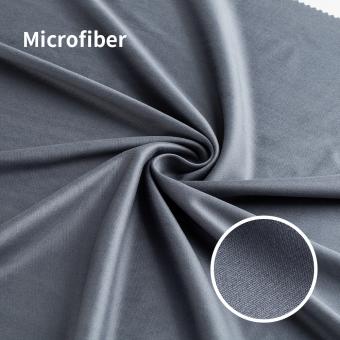Why We Use Scanning Electron Microscope ?
A scanning electron microscope (SEM) is used to obtain high-resolution images of the surface of a sample. It uses a focused beam of electrons to scan the surface and generate detailed images. SEM is widely used in various fields such as materials science, biology, geology, and nanotechnology. It provides valuable information about the topography, morphology, and composition of the sample. SEM allows for the visualization of structures at a much higher magnification and resolution compared to optical microscopes. It is particularly useful for studying samples with complex surface features, such as microorganisms, nanoparticles, and semiconductor materials. Additionally, SEM can be used for elemental analysis using energy-dispersive X-ray spectroscopy (EDS), which provides information about the chemical composition of the sample. Overall, the scanning electron microscope is a powerful tool for scientific research and analysis, enabling detailed examination of the surface properties of a wide range of materials and specimens.
1、 High-resolution imaging of surface topography and morphology.
We use scanning electron microscopes (SEMs) for high-resolution imaging of surface topography and morphology due to their unique capabilities and advantages over other imaging techniques. SEMs utilize a focused beam of electrons to scan the surface of a sample, providing detailed information about its structure and features.
One of the primary reasons for using SEMs is their ability to achieve high-resolution imaging. SEMs can produce images with magnifications ranging from a few times to several hundred thousand times, allowing for the visualization of surface details at the nanoscale level. This level of resolution is crucial in various fields, including materials science, biology, and nanotechnology, where understanding surface features and structures is essential.
Moreover, SEMs offer a three-dimensional view of the sample's surface, providing valuable information about its morphology. By tilting the sample and capturing images from different angles, SEMs can reconstruct the topography of the surface, revealing the shape, size, and distribution of features such as particles, pores, and surface roughness. This information is crucial for characterizing materials, studying biological samples, and analyzing the effectiveness of surface treatments or coatings.
In recent years, advancements in SEM technology have further enhanced its capabilities. For instance, the development of field emission SEMs (FE-SEMs) has significantly improved resolution and imaging quality. Additionally, the integration of energy-dispersive X-ray spectroscopy (EDS) systems with SEMs allows for simultaneous elemental analysis, enabling researchers to identify and map the chemical composition of different regions on the sample's surface.
In conclusion, scanning electron microscopes are used for high-resolution imaging of surface topography and morphology due to their ability to provide detailed information about the structure and features of a sample. With advancements in technology, SEMs continue to play a crucial role in various scientific and industrial applications, enabling researchers to explore and understand the nanoscale world.

2、 Detailed analysis of elemental composition and chemical mapping.
We use scanning electron microscopes (SEMs) for a variety of reasons, but one of the most important applications is the detailed analysis of elemental composition and chemical mapping. SEMs provide high-resolution imaging and allow scientists to examine the surface of a sample at a microscopic level.
One of the key advantages of SEMs is their ability to provide information about the elemental composition of a sample. By using energy-dispersive X-ray spectroscopy (EDS), SEMs can detect and analyze the characteristic X-rays emitted by different elements in the sample. This allows researchers to identify the presence of specific elements and determine their relative abundance. This information is crucial in various fields, such as materials science, geology, and biology, where understanding the elemental composition of a sample is essential for further analysis and interpretation.
Additionally, SEMs enable chemical mapping, which involves the spatial distribution of elements or compounds within a sample. By scanning the electron beam across the surface of the sample and collecting X-ray signals at each point, SEMs can generate elemental maps that provide valuable insights into the distribution and concentration of different elements. This information is particularly useful in materials science, where researchers need to understand the composition and structure of materials at a microscopic level.
In recent years, there have been advancements in SEM technology that have further enhanced its capabilities for elemental analysis and chemical mapping. For example, the development of field emission SEMs (FE-SEMs) has allowed for higher resolution imaging and improved detection limits for elemental analysis. Additionally, the integration of advanced software and automation features has made data acquisition and analysis more efficient and accurate.
In conclusion, the use of scanning electron microscopes is essential for detailed analysis of elemental composition and chemical mapping. With their high-resolution imaging and advanced analytical techniques, SEMs provide valuable information about the composition and distribution of elements in a sample. The latest advancements in SEM technology have further improved its capabilities, making it an indispensable tool in various scientific fields.

3、 Examination of material microstructure and crystallography.
We use scanning electron microscopes (SEMs) for the examination of material microstructure and crystallography due to their unique capabilities and advantages over other microscopy techniques. SEMs provide high-resolution imaging and detailed information about the surface morphology, composition, and crystal structure of materials.
One of the primary reasons for using SEMs is their ability to achieve high magnification and resolution. SEMs can produce images with magnifications ranging from a few times to several hundred thousand times, allowing for the visualization of fine details and structures at the micro and nanoscale. This is particularly useful for studying the microstructure of materials, such as metals, ceramics, and polymers, as well as biological samples.
Furthermore, SEMs offer the advantage of three-dimensional imaging. By using a focused electron beam to scan the sample surface, SEMs can generate depth information, enabling the visualization of surface topography and the examination of surface features from different angles. This capability is crucial for understanding the three-dimensional arrangement of microstructures and crystallographic features within a material.
In addition to imaging, SEMs also provide valuable compositional analysis. By utilizing energy-dispersive X-ray spectroscopy (EDS) or wavelength-dispersive X-ray spectroscopy (WDS), SEMs can identify and quantify the elemental composition of a sample. This information is essential for characterizing the chemical composition and distribution of elements within a material, aiding in the understanding of its properties and behavior.
The latest point of view regarding SEMs is the development of advanced techniques and capabilities. For instance, modern SEMs now incorporate environmental chambers, allowing for the examination of samples under controlled environmental conditions, such as high or low temperatures, humidity, or gas atmospheres. This enables researchers to study the behavior and performance of materials in real-world conditions.
Furthermore, advancements in SEM technology have led to the development of electron backscatter diffraction (EBSD) systems. EBSD provides crystallographic information by analyzing the patterns of backscattered electrons, allowing for the determination of crystal orientations, grain boundaries, and phase identification. This technique has become invaluable in materials science, geology, and metallurgy for understanding the microstructure and crystallography of materials.
In conclusion, scanning electron microscopes are used for the examination of material microstructure and crystallography due to their high-resolution imaging, three-dimensional capabilities, and compositional analysis. The latest advancements in SEM technology have further enhanced its capabilities, allowing for the study of materials under controlled environments and providing crystallographic information through EBSD. SEMs continue to be a vital tool in materials science, enabling researchers to gain valuable insights into the structure and properties of various materials.

4、 Characterization of nanoscale features and particles.
We use scanning electron microscopes (SEMs) for the characterization of nanoscale features and particles due to their unique capabilities and advantages. SEMs provide high-resolution imaging and detailed information about the surface morphology, topography, and composition of materials at the nanoscale level.
One of the primary reasons for using SEMs is their ability to achieve high magnification and resolution. SEMs can produce images with magnifications ranging from a few times to several hundred thousand times, allowing for the visualization of nanoscale features and particles that are not visible with conventional optical microscopes. This is particularly important in fields such as materials science, nanotechnology, and biology, where understanding the structure and behavior of nanoscale materials is crucial.
Moreover, SEMs offer the advantage of three-dimensional imaging. By using a focused electron beam to scan the sample surface, SEMs can generate detailed topographic information, revealing the height, depth, and shape of nanoscale features. This capability is essential for studying the surface roughness, texture, and morphology of materials, as well as for analyzing the size, shape, and distribution of nanoparticles.
In addition to imaging, SEMs also enable elemental analysis through energy-dispersive X-ray spectroscopy (EDS). EDS allows for the identification and quantification of the elemental composition of materials, providing valuable information about the chemical makeup and purity of nanoscale features and particles.
The latest point of view regarding SEMs is the development of advanced techniques such as scanning transmission electron microscopy (STEM) and focused ion beam (FIB) milling. STEM combines the imaging capabilities of SEMs with the analytical capabilities of transmission electron microscopy (TEM), allowing for atomic-scale imaging and elemental mapping. FIB milling, on the other hand, enables the precise fabrication and manipulation of nanoscale structures, opening up new possibilities for nanofabrication and device prototyping.
In conclusion, scanning electron microscopes are indispensable tools for the characterization of nanoscale features and particles. Their high-resolution imaging, three-dimensional capabilities, and elemental analysis make them essential in various scientific and technological fields. The continuous advancements in SEM techniques further enhance their capabilities, enabling researchers to explore and understand the nanoworld in greater detail.





































